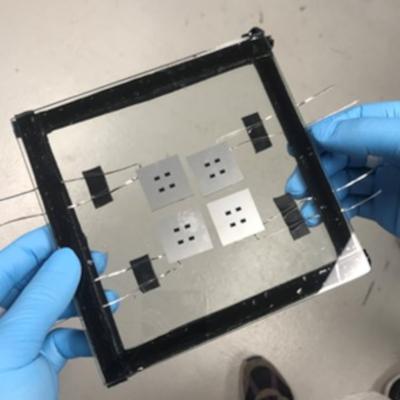Scientists from The University of Toledo, University of Washington, Northwestern University, University of Toronto and Empa–Swiss Federal Laboratories for Materials Science and Technology, have addressed a major challenge standing in the way of the commercialization of halide perovskite solar cells - their durability - by discovering an ingredient that enhances adhesion and mechanical toughness.
“Perovskite solar cells offer a route to lowering the cost of solar electricity given their high power conversion efficiencies and low manufacturing cost,” said Dr. Yanfa Yan, UToledo Distinguished University Professor of physics and a member of the UToledo Wright Center for Photovoltaics Innovation and Commercialization. “However, we needed to strengthen the emerging solar cell technology’s endurance during outdoor operation”. The technology needs to survive for decades outdoors in all kinds of weather and temperatures without corroding or breaking down.
“This challenge is no longer a roadblock to deploying the potential of perovskite solar cells,” Yan said. “Our breakthrough work improved device stability and presents ways of achieving success after a decade of research and development.”
The researchers experimentally demonstrated that perovskite solar cells treated with 1,3-bis(diphenylphosphino)propane (DPPP), a diphosphine Lewis base molecule, retained a high power conversion efficiency and exhibited superior durability after continuous operation under simulated sun illumination for more than 3,500 hours, or more than 145 days.
They used what is called one sun illumination, which is equivalent to outdoor sunlight.
“Phosphine-containing Lewis base molecules with two electron-donating atoms have a strong binding with the perovskite surface,” Yan said. “We saw the robust beneficial effects on perovskite film quality and device performance when we treated the perovskite solar cells with DPPP.”
“DPPP is also a commercialized product with low cost and easy accessibility, which make it suitable for the commercialization of perovskite solar cells,” said Dr. Zhaoning Song, a research assistant professor in Yan’s lab at UToledo and one of the authors on the new paper.
The team says the next step to move the technology forward is to employ their findings to make perovskite panels stable.
Dr. Chongwen Li, the first author of the study and a UToledo alumnus: “Continuing to exploit the potentiality in the stability of perovskite solar cells is a crucial priority for the ongoing decarbonization of the world’s economy. After the successful demonstration of DPPP on improving the stability of perovskite solar cells, we are further applying it to large area perovskite solar panels and moving the prototype device forward to commercialization.”


